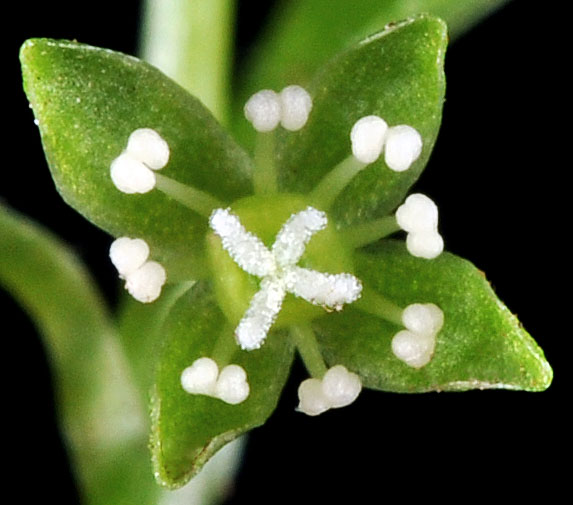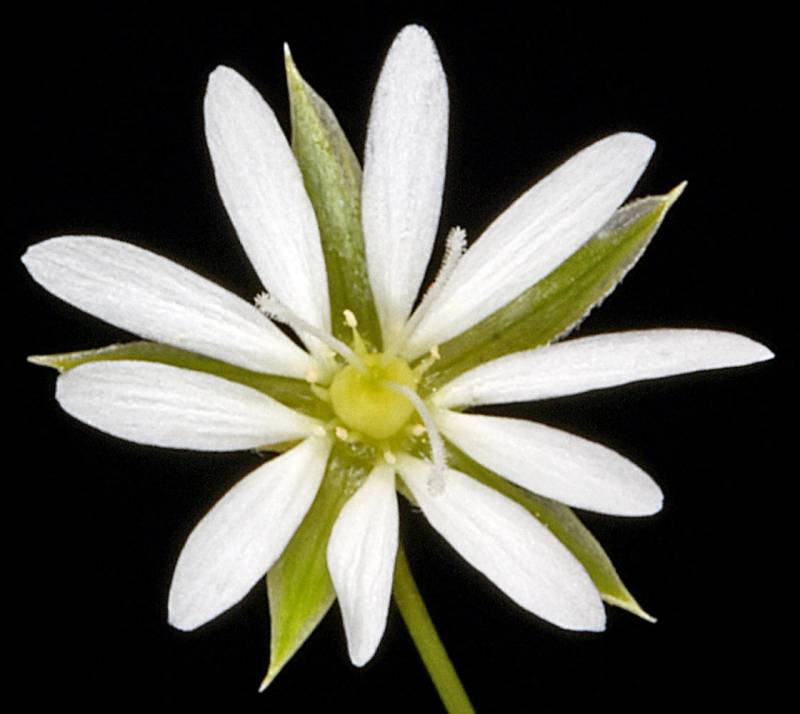Stellaria obtusa
Stellaria graminea
blunt-sepaled starwort
grass-leaf starwort
Leaves opposite, all cauline, lanceolate to linear-lanceolate, sessile, 1.5-2.5 cm. long.
Flowers many in a diffuse inflorescence, the pedicels slender, spreading, 2-4 cm. long;
sepals 5, lanceolate, pointed, 3.5-5.5 mm. long, the margins membranous and hairy;
petals 5, white, exceeding the sepals;
styles 3, 2-4 mm. long.
Capsule ovoid, greenish-yellow, equaling the calyx.
Stellaria obtusa
Stellaria graminea
Occurring on both sides of the Cascades in Washington; British Columbia to California, east to the Rocky Mountains.
Occurring in scattered locations on both sides of the Cascades crest in Washington; British Columbia to California, east to the Rocky Mountains, and from the southern Great Plains east to the Atlantic Coast.
- Local floras:
BC,
CA,
OR,
WA
- Local Web sites:
CalFlora,
CalPhotos,
Flora NW,
PNW Herbaria
WildflowerSearch
iNaturalist (observations)
USDA Plants Database
- LBJ Wildflower Center
- SEINet
- Plants of the World Online
- Encyclopedia of Life
- Wikipedia
- Google Image Search
- Local floras:
BC,
CA,
OR,
WA
- Local Web sites:
CalFlora,
CalPhotos,
Flora NW,
PNW Herbaria,
Turner Photog.
WildflowerSearch
iNaturalist (observations)
USDA Plants Database
- LBJ Wildflower Center
- SEINet
- Plants of the World Online
- Encyclopedia of Life
- Wikipedia
- Google Image Search



